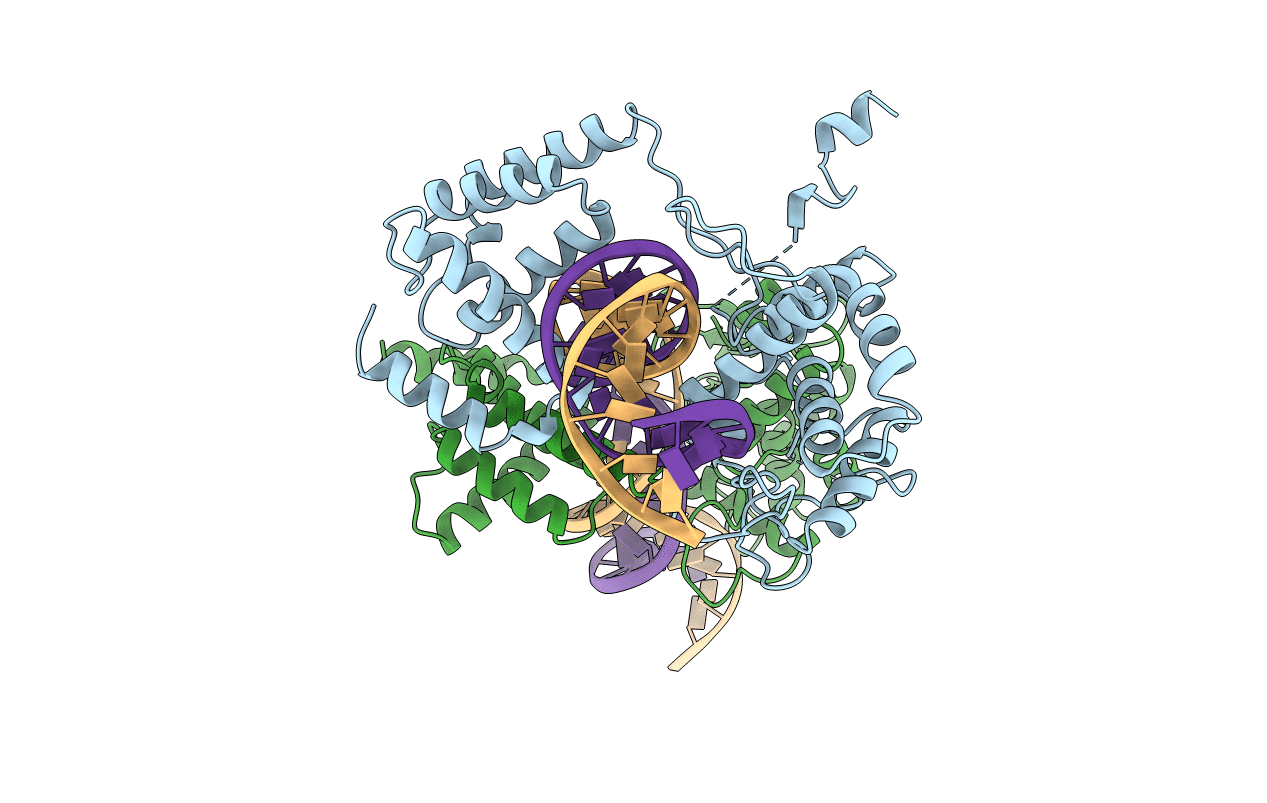
Deposition Date
1999-04-21
Release Date
1999-07-07
Last Version Date
2023-09-20
Entry Detail
PDB ID:
5CRX
Keywords:
Title:
ASYMMETRIC DNA-BENDING IN THE CRE-LOXP SITE-SPECIFIC RECOMBINATION SYNAPSE
Biological Source:
Source Organism:
Enterobacteria phage P1 (Taxon ID: 10678)
Host Organism:
Method Details:
Experimental Method:
Resolution:
2.70 Å
R-Value Free:
0.30
R-Value Work:
0.22
R-Value Observed:
0.22
Space Group:
C 2 2 21


